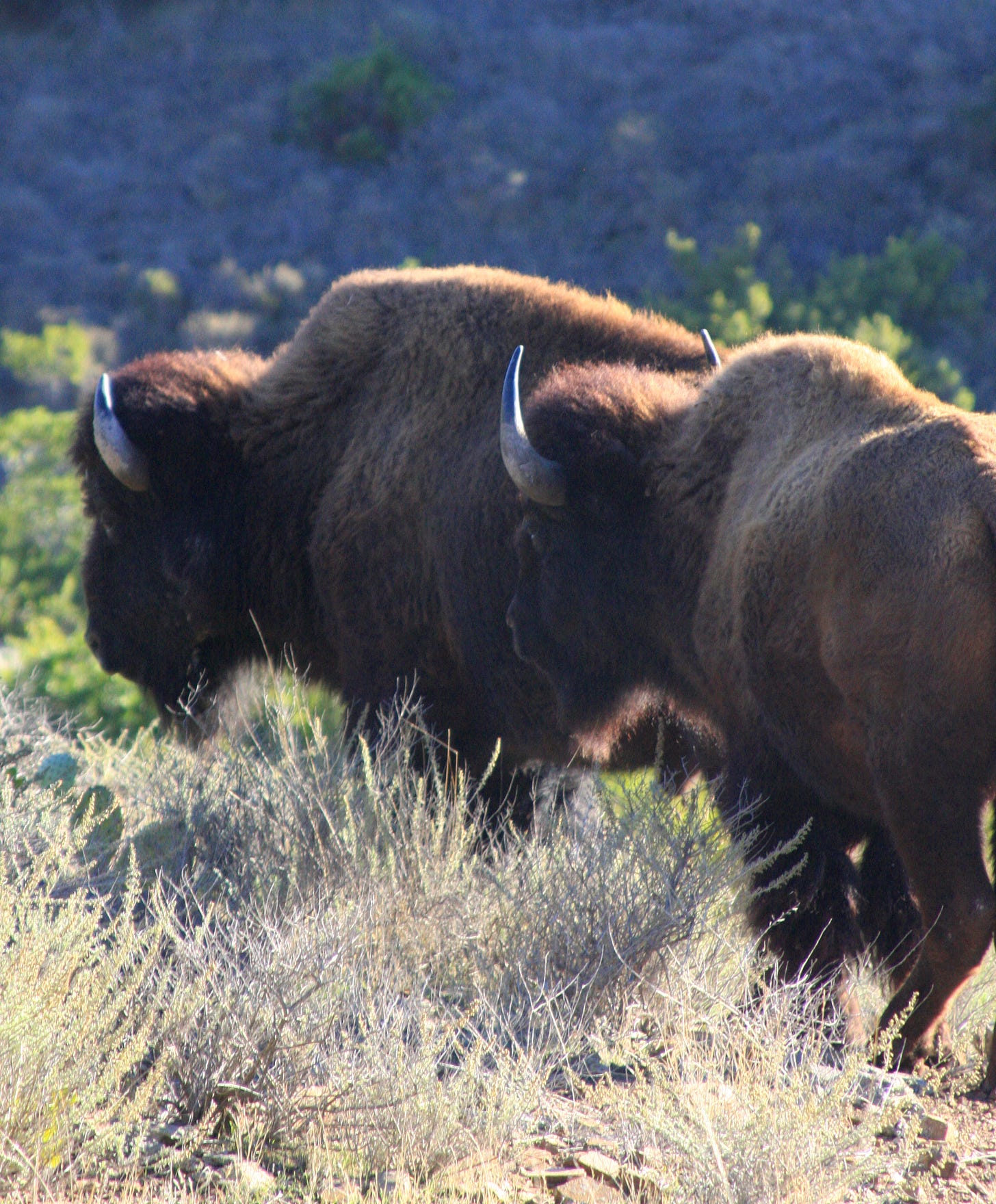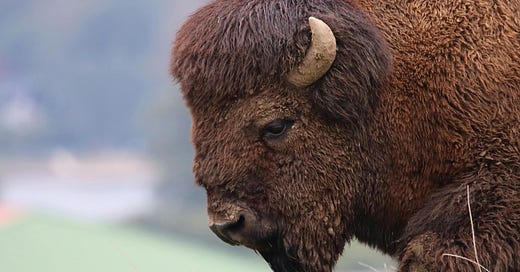Bison on the Beach: Catalina Island's Majestic and Unexpected Icons
Exploring the Surprising Legacy of Compassionate Conservation on Catalina Island
As an Angeleno, I was recently surprised to learn that Catalina Island is home to a majestic herd of bison. With the post-pandemic lull in tourism, these magnificent creatures have emerged from the island's rugged hills, gracing its idyllic beaches and captivating all who chance upon them. This unexpected sight set me on a journey to uncover the remarkable story of how these Western icons came to thrive in such an unlikely paradise.

History and Introduction of Bison
In the early 1920s, a small group of American bison was introduced to Catalina Island, not as part of a planned ecological initiative but as a byproduct of Hollywood's burgeoning film industry. Brought over for the filming of a movie, possibly Zane Grey's The Vanishing American, the bison were left to roam the island after the film's production. Despite their scenes being cut, the bison became permanent residents, thanks in part to William Wrigley Jr., the island's owner, who allowed them to stay.
Over the decades, the bison have become an integral part of Catalina's identity. Initially, their numbers grew unchecked, reaching as high as 600. However, the Catalina Island Conservancy now manages the herd, maintaining a sustainable population of around 100 to 150 animals to prevent ecological imbalance.
Compassionate Conservation in Practice
While the Conservancy may not openly frame its work within the specific philosophy of compassionate conservation, its practices clearly align with this approach. In fact, the management of Catalina’s bison stands as a century-long testament to the effectiveness of compassionate conservation. This approach to wildlife management prioritizes the welfare of individual animals while also considering ecological and environmental concerns. It seeks to avoid harm to animals, emphasizing non-lethal methods of population control and fostering coexistence between humans and wildlife.
The management of Catalina's bison exemplifies these principles, focusing on humane methods and the careful stewardship of individual animals. Instead of resorting to culling, the Conservancy employs birth control and relocation to maintain the herd at sustainable levels. Notably, some bison have been relocated to Native American reservations, where they are welcomed as a return to their ancestral lands. This approach reflects the compassionate conservation ethos of "first, do no harm," a guiding principle of this discipline.
Ecological and Ethical Considerations
While the bison are non-native and considered invasive, their management reflects their intrinsic value and cultural significance. The Conservancy's efforts to maintain the herd without resorting to lethal control demonstrate a commitment to peaceful coexistence and respect for individual animals. This contrasts with traditional conservation methods, which might prioritize ecosystem health over individual welfare.
Ecological Impact
The presence of bison on Catalina Island has sparked debate among conservationists and ecologists. Their grazing habits impact the island's flora, helping control some invasive grasses but also contributing to soil erosion and the spread of non-native plant species. This has led to a reduction in plant diversity and damage to native species, including oak trees and endemic plants like St. Catherine's lace. However, the compassionate conservation approach seeks to mitigate these effects through non-lethal management practices, balancing the needs of the bison with the preservation of native species.
Despite these challenges, the bison have become a beloved symbol of the island, drawing tourists eager to catch a glimpse of these majestic creatures. The Catalina Island Conservancy offers tours that allow visitors to explore the island's interior and observe the bison in their natural habitat, contributing to the local economy.
Conclusion
The management of bison on Catalina Island illustrates how compassionate conservation principles can be effectively implemented, even if not explicitly acknowledged by the managing body. The Catalina Island Conservancy focuses on conservation, education, and recreation, aiming to balance the preservation of the island's natural resources with public enjoyment which seems to align with this approach perfectly.
By maintaining a sustainable bison population through birth control and relocation, the Conservancy has created a model for managing introduced species in a way that respects both ecological and ethical considerations. This approach not only preserves the cultural and economic benefits of the bison but also aligns with a growing recognition of the cognitive and emotional capacities of animals, advocating for a future where humans and wildlife coexist harmoniously.
Ed Boks is a former Executive Director of the New York City, Los Angeles, and Maricopa County Animal Care & Control Departments. He is available for consultations. His work has been published in the LA Times, New York Times, Newsweek, Real Clear Policy, Sentient Media, and now on Animal Politics with Ed Boks.





Good outcome for the bison.👏♥️🕊️.
Thanks for sharing such an interesting story, Love this 🥰🥰🥰